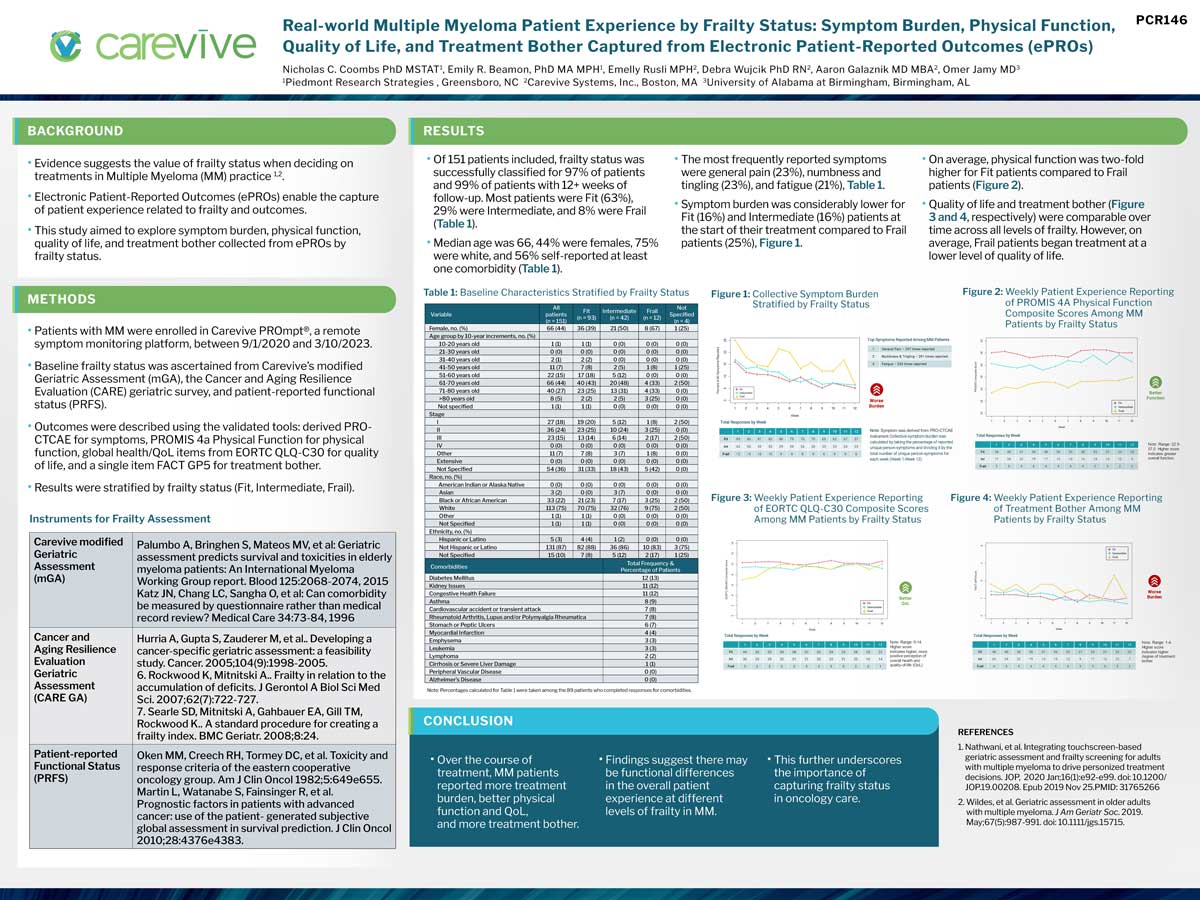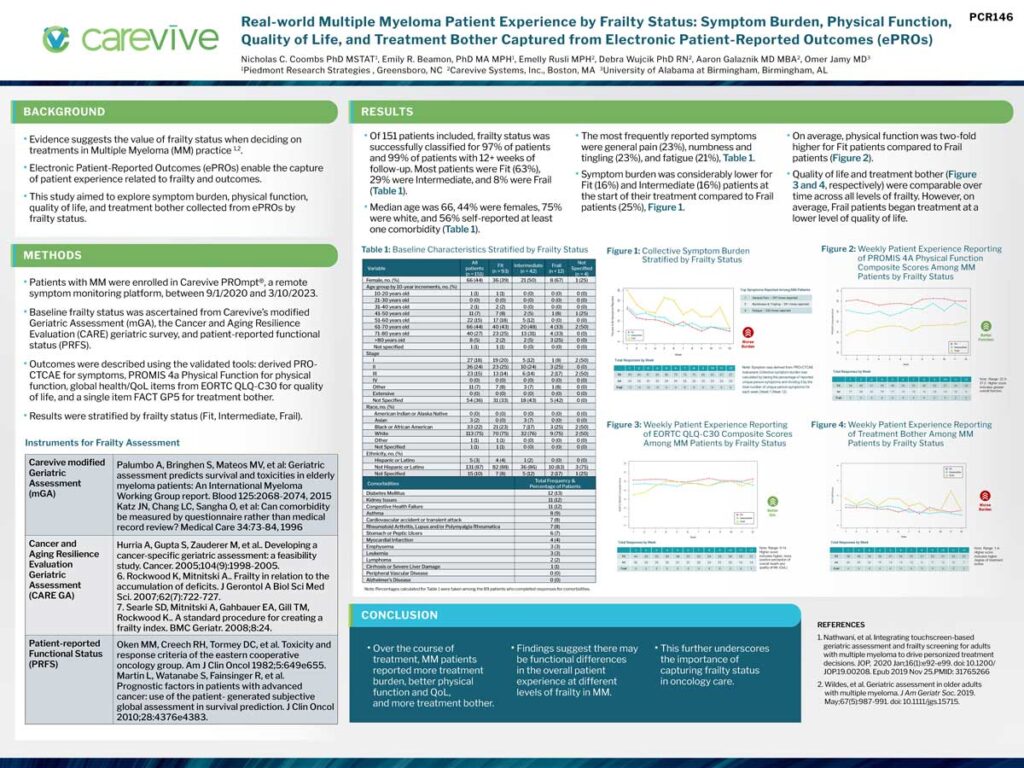
Authors: Nicholas C. Coombs PhD MSTAT1, Emily R. Beamon, PhD MA MPH1, Emelly Rusli MPH2, Debra Wujcik PhD RN2, Aaron Galaznik MD MBA2, Omer Jamy MD3
1 Piedmont Research Strategies , Greensboro, NC, 2 Carevive Systems, Inc., Boston, MA, 3 University of Alabama at Birmingham, Birmingham, AL
Background
- Evidence suggests the value of frailty status when deciding on treatments in Multiple Myeloma (MM) practice 1,2.
- Electronic Patient-Reported Outcomes (ePROs) enable the capture of patient experience related to frailty and outcomes.
- This study aimed to explore symptom burden, physical function, quality of life, and treatment bother collected from ePROs by frailty status.
Methods
- Patients with MM were enrolled in Carevive PROmpt®, a remote symptom monitoring platform, between 9/1/2020 and 3/10/2023.
- Baseline frailty status was ascertained from Carevive’s modified Geriatric Assessment (mGA), the Cancer and Aging Resilience Evaluation (CARE) geriatric survey, and patient-reported functional status (PRFS).
- Outcomes were described using the validated tools: derived PROCTCAE for symptoms, PROMIS 4a Physical Function for physical function, global health/QoL items from EORTC QLQ-C30 for quality of life, and a single item FACT GP5 for treatment bother.
- Results were stratified by frailty status (Fit, Intermediate, Frail).
Conclusion
- Over the course of treatment, MM patients reported more treatment burden, better physical function and QoL, and more treatment bother.
- Findings suggest there may be functional differences in the overall patient experience at different levels of frailty in MM.
- This further underscores the importance of capturing frailty status in oncology care.

